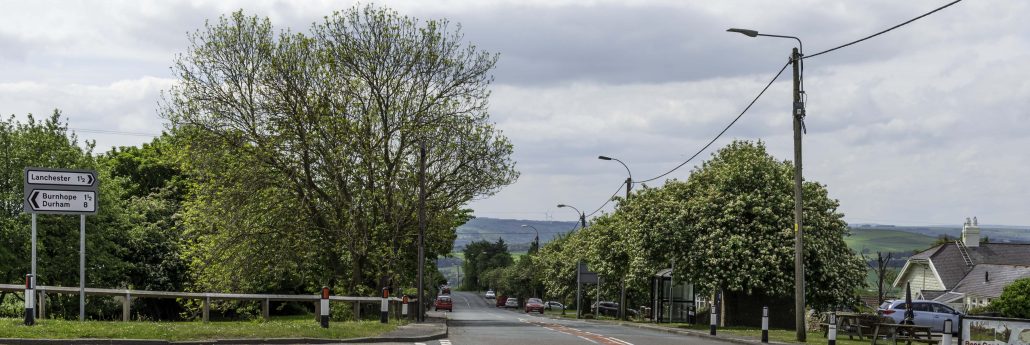History of Greencroft
The small parish of Greencroft lies just to the north of the village of Lanchester, of which it was once part.
If you have any historical information on Greencroft including old photographs please contact the Parish Clerk for consideration.
Greencroft Tower
In the 18th century a Gothic style arch, known as Greencroft Towers, was built at the eastern entrance to the estate. An ice house and a dovecot were also built at roughly the same time.
 Sadly the hall fell out of use by the 1930s and it was demolished in 1954; the arch was demolished the following year as it had been in danger of collapse.
Sadly the hall fell out of use by the 1930s and it was demolished in 1954; the arch was demolished the following year as it had been in danger of collapse.
All the nearby cottages were abandoned at the same time.
Maiden Law
There are few early remains here, and it is only in the medieval period that Greencroft first comes to notice, although the important Roman road Dere Street runs to the west of the area.
Greencroft Park was probably the site of a deserted medieval village, unfortunately no remains can be seen here now. Greencroft Hall was probably the site of the original manor house of the village, although the main building was heavily rebuilt in the 17th century.
Greencroft had traditionally been a farming area, and a small cornmill once stood close to the Newhouse Burn. However, in the 19th century coal mining became an increasingly important part of the local economy. Now, as has happened elsewhere in Durham, the coal mining industry has entirely disappeared.
Maiden Law was originally a hamlet of three farms – Maiden Law Farm, Howden Bank Farm and Maiden Hall Farm. The hamlet also included two public houses, The Three Horse Shoes and The Board Inn, two houses, a windmill and four stone cottages.

